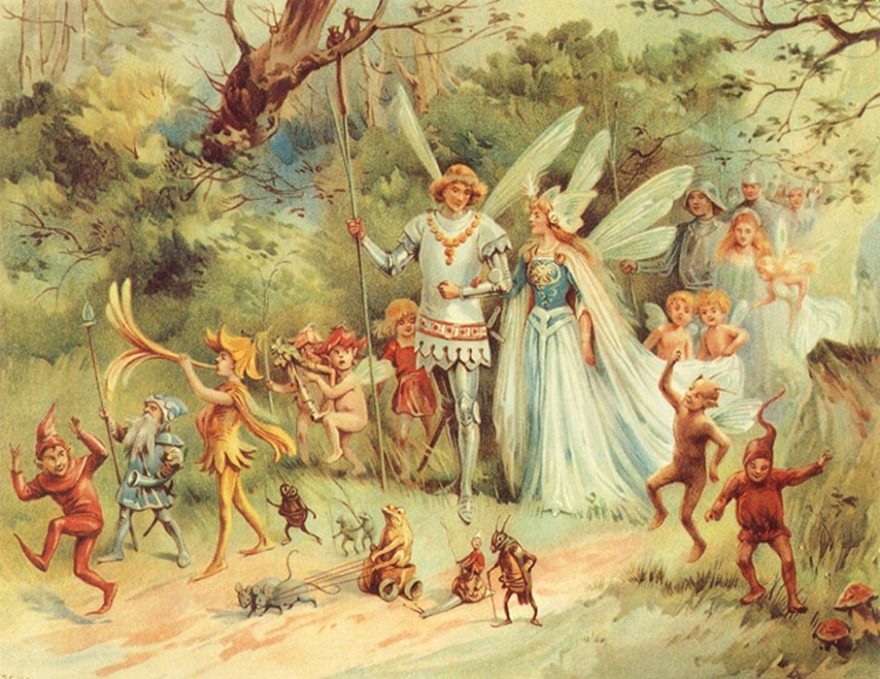
Hand in hand, with fairy grace,
Will we sing, and bless this place.
The title of the beautiful painting on the left by Sophie Anderson speaks volumes:
“Take the Fair Face of Woman, and Gently Suspending, With Butterflies, Flowers, and Jewels Attending, Thus Your Fairy is Made of Most Beautiful Things,” (c. 1869).
Sophie Anderson lived in an affluent artist colony on the Italian island of Capri when she painted this portrait of a fairy. Sir Frederick Leighton was also a member of the colony at that time. You know Lord Leighton’s work, even if you don’t immediately associate his name with them. He was one of the Pre-Raphaelites who resided in London in the mid 1800s. This one is a favorite of mine. It offers a hint of the direction we intend to pursue with this (mostly visual) blog.

The rhyming couplet that introduced the blog is from Titania’s instruction to her fairy train at the conclusion of Shakespeare’s A Midsummer Night’s Dream. My favorite illustration of that particular scene was created by one of my favorite poets, William Blake. We might mention here that one of Brighid’s many titles is Goddess of Poetry.

Oberon and Titania, King and Queen of the Fairies, are on the left. Puck, the trickster and perplexer of mortals, faces us. The fairies Moth and Peaseblossom are easily identifiable. We’ll guess the third fairy is Mustardseed.
The Queen of Elphame, my original title for this blog, translates as the Queen of Fairyland. She is associated with the Tuatha Dé Danann, the mythological family of supernatural beings in Irish folklore. While Brighid’s family was indeed the Tuatha Dé, she was never, to my knowledge, proclaimed Queen of Fairyland. That is, not until now.

The attributes of the Queen of Ephrame – magic, childbirth, poetry and healing – are attributes commonly associated with Brighid, as well as with several of her counterparts such as the Norse Goddess Freyja. Lush red hair appears to be a common attribute.
I’ve always believed that artists, well, many artists, receive inspiration from a obscure mound of dirt – a fairy mound – tucked neatly away on some mossy knoll of the Celtic Otherworld. After composing this blog, I’m rather convinced of it!

Know that everyone, including the beings of the Dragonfae, is delighted and happy to know of your ability to delight in your own self. Celebrate, and we celebrate with you. Hail, joyful kindred spirit and be welcome to the feast! ~ Titania, as channeled by Lucy Cavendish in Oracle of the Dragonfae.
 “Dragonfae are powerful and bring deeper understanding and clarity to all things…they tend to come into our lives to remind us who we really are and to active aspects of ourselves that we may have forgotten…Dragonfae help us to access knowledge from deep within.” – from the Dragonfae companion book.
“Dragonfae are powerful and bring deeper understanding and clarity to all things…they tend to come into our lives to remind us who we really are and to active aspects of ourselves that we may have forgotten…Dragonfae help us to access knowledge from deep within.” – from the Dragonfae companion book.
~
You can follow this novena’s blogs by punching the button below. Previous blogs in this series are linked below under the label “Recent Posts.”
© Toney Brooks, 2019
